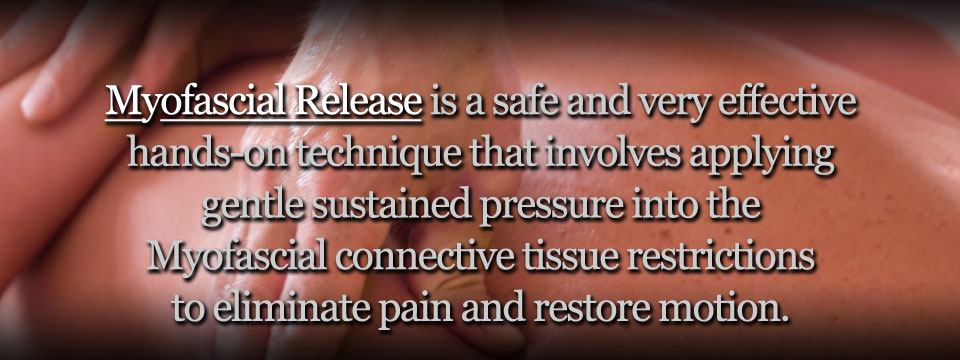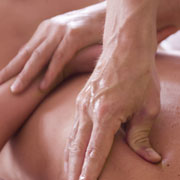
SPECIAL TECHNIQUE OF MYOFASCIAL RELEASE:
Myofascial Release is a safe and highly effective hands-on technique that applies sustained pressure to myofascial connective tissue restrictions, helping eliminate pain and restore motion. This approach allows us to treat each patient as a unique individual. During one-on-one therapy sessions, our therapists use various Myofascial Release techniques, movement therapies, and self-treatment instructions. Myofascial Release promotes independence through proper body mechanics, enhances strength, improves flexibility, and increases postural awareness.
MYOFASCIAL BINDING AND/OR RESTRICTIONS:
Myofascial (muscular and connective tissue) binding, restrictions, and lesions can lead to significant postural distortion, pain, and movement limitations. Fascia typically runs lengthwise throughout the body, with 14 longitudinal anatomical fascial tracks and trains (as described by Tom Myers at www.anatomytrains.com). Additionally, there are seven bands of fascia that encircle the body: around the buttocks, pelvis, umbilical area, chest, neck, jaw, and eyes.
In addition to the seven bands of fascia, there are two other areas of fascial binding: around the lateral hip and around the coracoid process of the shoulder-scapula complex, both of which can contribute to a forward head posture.
Shortening of the rectus abdominis promotes forward and restricted movement of the head, neck, and shoulders, while creating dynamic tension in the lower back. This, in turn, contributes to the shortening of the psoas muscle and the deterioration of the lumbar spine.
Postural integration and Myofascial Release differ from biomechanical assessment. Myofascial assessment is performed in a static, standing position with basic range-of-motion movements. In contrast, biomechanical assessment is dynamic (for example, walking on a treadmill) and uses video to evaluate the movement of specific body parts in relation to others.

MYOFASCIAL RELEASE:
Through a comprehensive postural integration assessment and movement evaluation of the sternal syndrome, we apply specialized Myofascial Release techniques to restructure and rebalance the body, enabling a progressive exercise program.
Most physical therapy offices overlook the fascia as a key component of the body’s dysfunction. In reality, it is one of the most vital tissues in our body’s structure.
When one is exposing oneself to repeated poor posture or physical strain, the fascia, connective tissue and muscular system will adapt to that posture. When the body adapts to this, the pain and alignment problems become apparent through pain, loss of ROM and loss of function. The aim of our hands on work is to quickly restore the alignment and movement of a patient where they can begin doing appropriate exercises to stabilize themselves.
